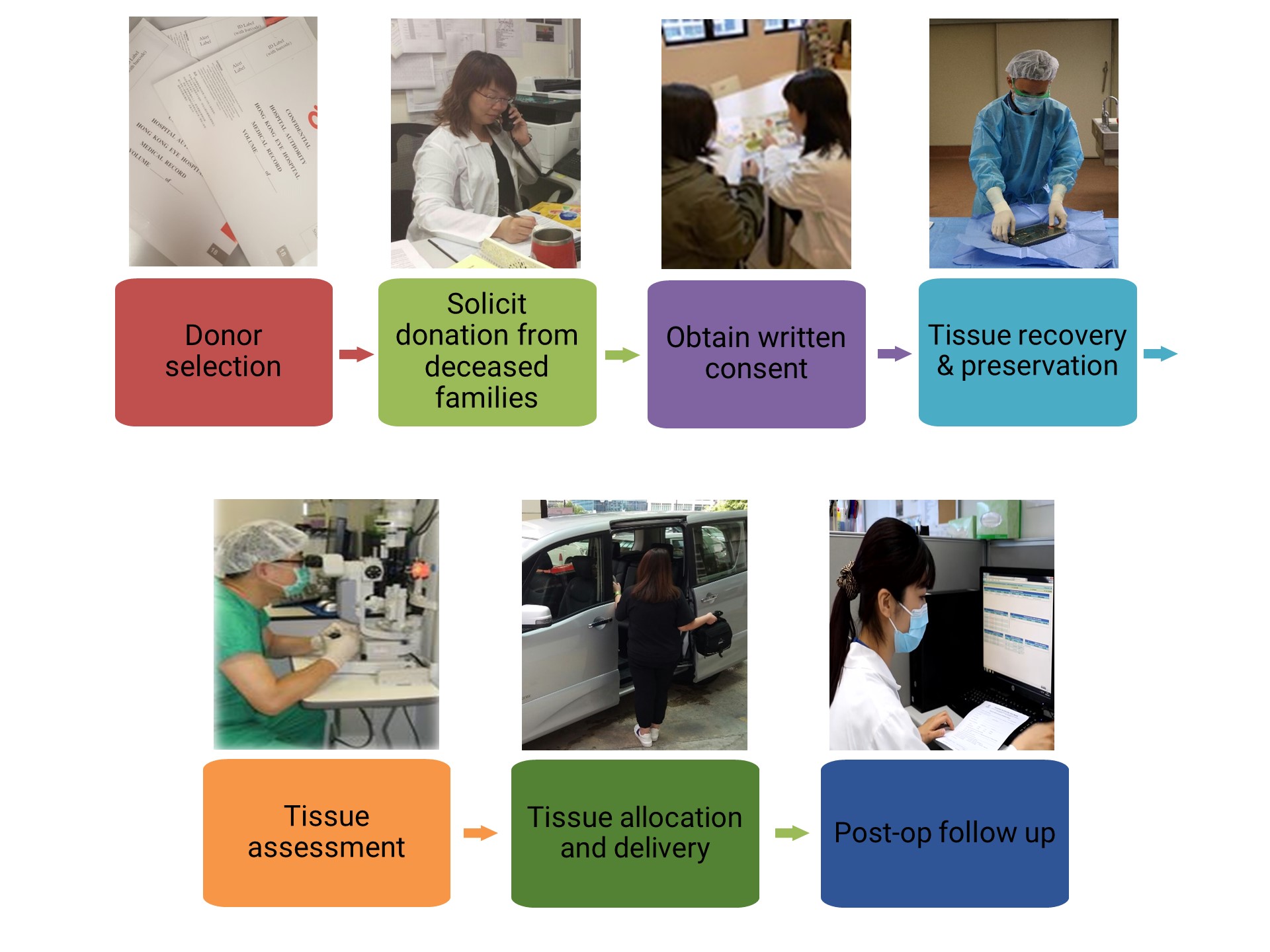
The CORNEA is the outermost layer of the eye and is a clear and transparent surface. The dome-shaped cornea looks like a contact lens. The average diameter of an adult cornea is about 11mm and is 0.5mm in thickness. The cornea allows light to enter into the eye. Vision may be reduced or lost if the cornea becomes cloudy or scarred from disease, injury or infection. This condition is known as corneal blindness and corneal transplant may be useful to restore vision.
The SCLERA is the white protective outer layer of the eye. A donated sclera can be used for glaucoma and ocular
reconstructive surgeries.
Even when not suitable for transplant, these tissues provide extremely valuable information on the management of various corneal diseases. They may be used by researches to look for newer solutions to manage corneal blindness, and in training ophthalmologists and eye bank technicians in the latest transplantation techniques and processing.

